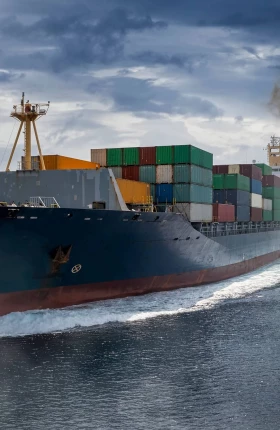Jeremy Kay, a BCG managing director and partner, talked with us about North American companies’ challenges in building operational resilience.
Meet Jeremy

BCG: You recently authored an article titled, “If Disruption Is the New Normal, Operational Resilience Is the New Necessity.” How are your North American clients describing what “normal” means today?
Jeremy Kay: A common refrain among my clients these days is that things are bound to go wrong—and in significant ways. Executives recognize that the stable, predictable supply of goods and materials is a thing of the past. The fundamental objective of getting products to market to satisfy demand has become a lot more complicated.
What types of disruptions are North American companies most concerned about?
The risks of manufacturing and sourcing in Asia are big concerns right now. North American companies' heavy dependence on Asia makes them highly vulnerable to shortages of global shipping capacity and rising geopolitical tensions.
We recently helped an electrical-equipment manufacturer assess the health of its supply chain. The most important lens for its leaders was getting a good view of their exposure to Asia. The exposure is especially problematic for products sourced from a single supplier. To prioritize the related risks, we distinguished products for which alternative suppliers are readily available versus highly engineered products for which the company must rely on a sole source. For the latter, especially in high-risk cases, the company can try to redesign products to enable sourcing from alternative suppliers. It can also do this proactively for products in development. Another option is to establish processes that enable quick reactions to disruptions relating to products identified as being at high risk.
Stay ahead with BCG insights on business resilience
In addition, companies are concerned that labor shortages are harming their operations even within North America. Some companies have struggled to find enough people to operate their machines and get products out the door.
What are companies doing to address these challenges?
Companies recognize that they need to enhance their abilities to quickly identify and assess risks, react fast, and absorb the impacts of disruptions across the supply chain. To build this operational resilience, companies are investing in tools for real-time monitoring and prediction, broadening design specifications, and building inventories. Companies are also rethinking their labor and automation strategies to avoid getting burned by staffing shortages. To shorten supply chains and expand their labor pools, some companies are near-shoring manufacturing operations to alternative locations in North America, such as Mexico.
However, companies are wrestling with understanding how resilient they need to be. They don't necessarily know the real value of resilience, and therefore how much they should be willing to invest in resilience. They also don't know how far they need to go to mobilize the organization. Some companies have assigned one person, whereas others have set up teams of people dedicated to building operational resilience.
Are there any misconceptions that you warn clients about as they decide on their approach?
It's important to understand that building up inventory is not a panacea. I've recently heard from two clients that, even though inventories are at all-time highs, their service levels are still lower than before the COVID-19 pandemic. Meanwhile, building inventories has hurt their cash flow and working capital. The harm to their balance sheets is starting to concern their financial leaders. This situation wasn’t as problematic when demand kept rising, but with slower growth and a looming downturn, spending heavily on inventory isn’t sustainable.
Companies are wrestling with understanding how resilient they need to be.
Many companies increase inventories because it’s one of the easiest and quickest ways to address supply chain problems. But it really just masks the problems. In fact, it’s the least capital-effective way to become more resilient. Chief among the reasons is that you need everything—an inventory that’s overflowing with raw materials isn’t useful if you’re still missing one critical component for a product.
To truly become resilient, companies need to build a wide variety of capabilities to, for example, gain visibility, achieve greater flexibility, and react faster to disruptions. Developing only a few of these capabilities is not enough.
How can companies make cost-benefit tradeoffs when they invest in resilience?
We advise clients to make these tradeoffs in a very specific and nuanced way for their business. They need to focus on the investments that will give them the best resilience returns given their risk profile. I compare it to investing in an insurance policy: you don’t want to pay for more insurance than you need but you don’t want to be underinsured either. Striking the right balance for resilience investments is especially hard because companies don’t know if and when something is going to disrupt their supply chain. But it’s better to make some assumptions and take action, even if it might not be optimal, than to get stuck in “analysis paralysis.”
To reduce the uncertainty when building operational resilience, companies need to establish full visibility across their supply chain and assess the risks. With that fact base in hand, they can start to understand the real value of resilience for their business.








